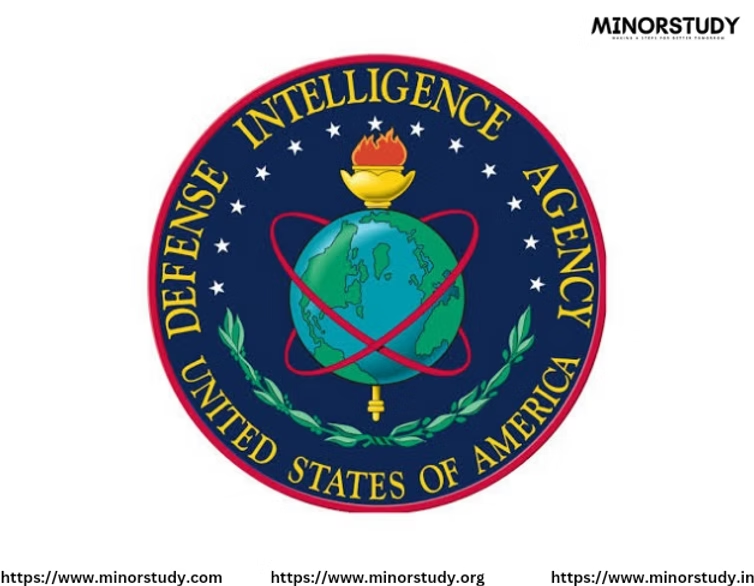The Defense Intelligence Agency (DIA) is one of the principal intelligence agencies of the United States, specializing in military intelligence and defense-related operations. It is part of the U.S. Department of Defense and plays a crucial role in national security by supporting military operations and decision-making with actionable intelligence.
Overview
Founded: October 1, 1961
Headquarters: The Pentagon, Arlington, Virginia, USA
Mission: To provide intelligence on foreign militaries to prevent strategic surprises and support warfighters, defense planners, and policymakers in the U.S.
Parent Organization: U.S. Department of Defense (DoD)
Key Functions of the DIA
Military Intelligence:The DIA specializes in intelligence about foreign military capabilities, tactics, and operations. It assesses threats posed by potential adversaries and monitors the global security environment.
Strategic and Tactical Intelligence:The agency provides intelligence for both short-term tactical operations and long-term strategic planning, ensuring the U.S. military and policymakers are prepared for any contingencies.
Human Intelligence (HUMINT):The DIA oversees the collection of human intelligence (HUMINT) for the Department of Defense. It deploys personnel globally to gather information on foreign military and security developments.
Defense Attaché System:The DIA manages the Defense Attaché System, which assigns military officers to U.S. embassies worldwide to serve as liaisons and intelligence gatherers.
All-Source Analysis:The agency integrates and analyzes intelligence collected from multiple sources, including signals intelligence (SIGINT), imagery intelligence (IMINT), and open-source intelligence (OSINT).
Counterintelligence:The DIA conducts counterintelligence operations to identify and neutralize threats to U.S. military personnel, facilities, and operations worldwide.
Cyber Threat Analysis:With increasing cyber threats, the DIA monitors adversaries’ cyber capabilities and provides insights to protect U.S. systems and networks.
Structure
The DIA is organized into several directorates and centers, each focusing on different areas of intelligence collection and analysis:
Directorate for Analysis (DI): Produces assessments on foreign military threats and capabilities.
Directorate for Operations (DO): Manages HUMINT collection and oversees clandestine operations.
Directorate for Science and Technology (DST): Focuses on technical intelligence and advanced technology research.
National Center for Medical Intelligence (NCMI): Analyzes health threats that could impact global security or military operations.
Joint Intelligence Task Forces (JITFs): Provides tailored intelligence support for joint military commands.
Significant Contributions
Cold War Operations:Played a critical role in monitoring Soviet military activities and capabilities, providing key insights during the Cuban Missile Crisis and other pivotal events.
War on Terror:The DIA has been central to intelligence operations in the Middle East, including tracking terrorist organizations like Al-Qaeda, ISIS, and the Taliban.
Global Threat Analysis:The agency produces regular assessments of military threats posed by nations such as China, Russia, North Korea, and Iran.
Support in Major Conflicts:The DIA has provided critical intelligence during U.S. operations in Iraq, Afghanistan, and other regions, helping to shape military strategies.
Notable Features
Integration with the Intelligence Community:The DIA collaborates with other U.S. intelligence agencies, such as the CIA, NSA, and FBI, as well as international allies.
Focus on Foreign Militaries:Unlike the CIA, which deals broadly with foreign intelligence, the DIA is exclusively focused on military intelligence.
Global Reach:With personnel stationed in over 140 countries, the DIA is one of the most widely deployed U.S. intelligence agencies.
Challenges
Emerging Technologies:Keeping pace with adversaries’ advancements in cyber warfare, artificial intelligence, and missile technology.
Geopolitical Shifts:Adapting to dynamic threats posed by rising powers like China and the resurgence of Russia.
Terrorism and Asymmetric Threats:Monitoring non-state actors and transnational terrorist organizations that operate across borders.
Key Facts
The DIA is a key player in the Intelligence Community (IC), working alongside 17 other U.S. intelligence agencies.
It operates the Defense Intelligence Agency Headquarters (DIA HQ) at the Pentagon and other field offices worldwide.
The agency also supports U.S. combatant commands by embedding intelligence officers in military operations.
Conclusion
The Defense Intelligence Agency (DIA) is essential for the United States’ defense strategy. By providing accurate and timely military intelligence, it ensures that U.S. policymakers, military leaders, and national security professionals can make informed decisions to address both immediate threats and long-term challenges. Its focus on foreign military capabilities and global security makes it a cornerstone of U.S. intelligence operations.








